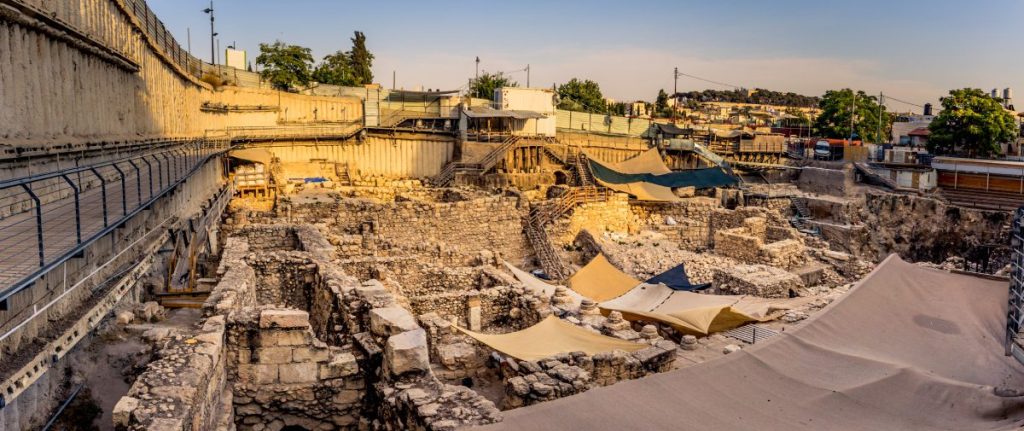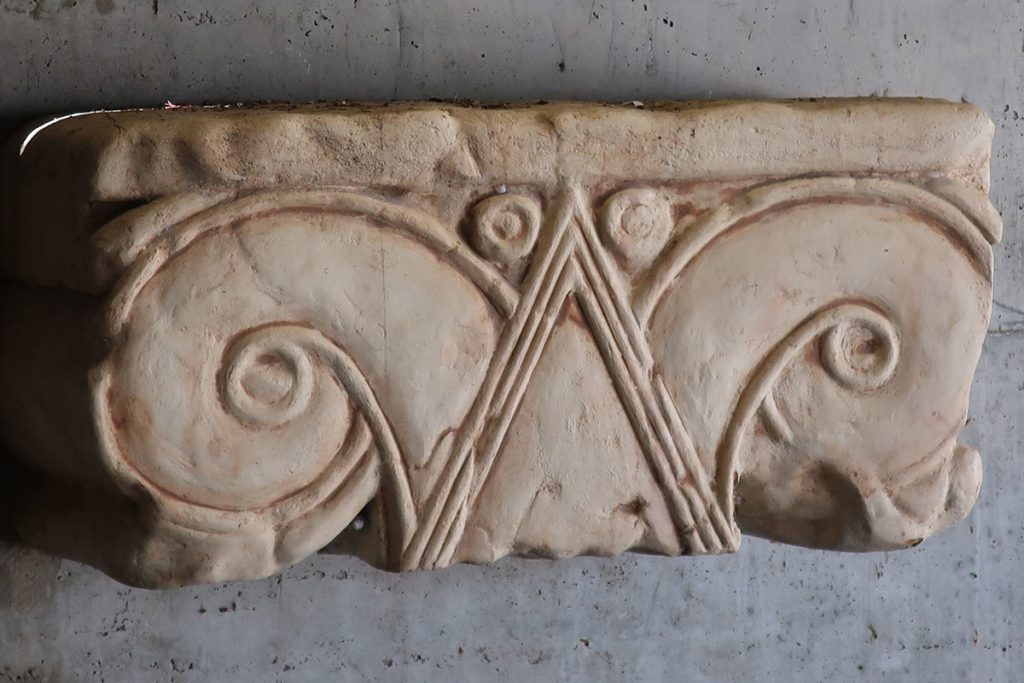In this post, we will go private touring the City of David following the footsteps of Professor Yigal Shiloh (1937-1987) from the Institute of Archaeology of the Hebrew University in Jerusalem conducted a lot of important research on the Iron Age. He was one of the firsts to conduct a comprehensive archaeological excavation in the City of David. Shiloh’s research examined the architectural characteristics of the period and his research is still considered one of the foundations of research in this field.

In the 1970s Yigal Shiloh found early Israelite houses dating to the 8th-7th century B.C.E sitting on top of the lower part of a Glacis dated to the Davidic or Canaanite Period. So by the 8th-7th B.C.E, the Acropolis of the City of David had moved further to the north, and houses were built on the lower part of the Glacis.
Excavations at the City of David

Shiloh excavated a series of those early Israelite houses. Those homes are very interesting because they are very typical examples of Israelite houses not only in Jerusalem; but actually throughout the country. The best-preserved example of one of these houses is a house called ‘The House of Ahiel’.
Private Touring the City of David: What Is A Four Room House?
The house consists of three long narrow rooms side by side in the front and one room running along the back; along its width. Furthermore, there was a staircase that originally led up to a 2nd story level. Archaeologists called it a ‘Four Room House’ because the ground floor of the building had four rooms.

Inside Shiloh found something surprising. Pillar figurines, a kind of figurine that is a kind of schematic made of clay. They were fairly small; which almost always usually depicts a woman naked to the waist and cupping her breasts under her hands. Well, it is kind of surprising to find figurines like these found in the Israelite context. What is interesting about it is that this exactly the same kind of practice; pagan practices; that the biblical prophets warned the Israelites about.
Private Touring the City of David: How Do We Explain This Discovery?
How can such a discovery be found in an Israeli context; in Jerusalem; in viewing distance of the Temple at Temple Mount? Well, obviously the prophets wouldn’t have been cautioning the Israelites against adopting this kind of practice unless some people were actually doing that.

We see some physical evidence for the very kind of practices that the prophets warned the Israelites about. Well, I am sure you are wondering if these houses are actually Israelite houses?! Well, actually Shiloh found in one of those houses a cash of over 50 bullae. This finding proves that once upon a time there was an archive of documents in this house. Why did Shiloh find bullae but did not find any documents? Because in 586 B.C.E all these houses were destroyed by the Babylonians. And were set on fire and burned down. The fire that destroyed these houses burned the documents but also fired the little lumps for raw clay and preserved them.
Ancient Jerusalem’s Water Systems

How Did the Bullaes Survive 3,000 Years?
Because ordinarily lumps of raw clay would not be preserved after 3000 years they would have turned back into mud. But the fire that burned the houses fired the little lumps of clay and preserved them. This is also another reason why those bullae that Shiloh found are so interesting because those bullaes that he found were also inscribed with names in biblical Hebrew that presumably with the names of the owner meaning the one they made the impression with his seal on the lump of raw clay.

Credit: David Bena (CC BY-SA 4.0)
And these inscriptions with biblical Hebrew are extremely important to tell us about the population of Jerusalem in the 7th and 8th century B.C.E. Are there any of the names mentioned in the Hebrew Bible that match those names inscribed on those bullaes? the problem is the most people in biblical Jerusalem had the same generic names (for example Joe the son of Samuel), there were the same small pool of names used over and over again, so we can not say with certainty that the same name mentioned in a given passage in the Hebrew bible is the same individual mentioned in one of those bullaes
A Special Bullae With A Special Name
But there are at least one bullae that Shiloh found that we can say almost for certainty say that is the same individual mentioned in the Hebrew bible. It is inscribed “Gemaryahu son of Shaphan”. It is an unusual name. And we have and the book of Jeremiah a reference who has the very same name and here is the Passage:

(Credit: Asaf Karavani – CC BY-SA 3.0)
Then Baruch read from the book the words of Jeremiah in the house of the LORD in the chamber of Gemariah the son of Shaphan the scribe […]
(Jeremiah 36:10)
Gemariah here is described as a scribe. The very sort of person you would expect to be using a personal seal to seal documents. And this Gemariah was active in the court of the King of Judah roughly around the year 600 B.C.E. These houses were destroyed in 586 B.C.E so the timing fits as well. So everything here fits very nicely so we can say with as much certainty that we can get that this seal was sealed by the same individual mentioned in the bible.

Another issue that the writing on those bullae is in an ancient biblical script. Now the Hebrew Alphabet that is used the same is not what was used 3000 years ago, which is an ancient Hebrew script. it’s a different Alphabet. What is this Biblical Hebrew script? It is not an Alphabet invented by the Israelites but an Alphabet adopted from the Canaanites.
The Canaanite Alphabet
The Canaanites had already developed their own Alphabet prior to the arrival of the Israelites to the Land of Israel. What the Canaanites did is to modify some of the signs that were used by Egyptian Hieroglyphs and turn them into their own Alphabet.
Hills of Judea Tour

(Credit: British Museum – (CC BY-NC-SA 4.0)
In Egyptian Hieroglyphs you have a system where each symbol represents an entire word. The great stroke of genius of the Canaanites was to take some of those symbols and to adopt them into their alphabet instead of having each symbol representing an entire word. Each symbol represents a single syllable.
By the way, all the neighboring nations adopted the Canaanite script. Including the Phoenicians. Later this script was adopted by the Greeks. And then spread to the rest of Europe by the Romans. This script was used by the Israelites till 586 B.C.E. But after the Babylonian conquest, the Israelites stopped using the Biblical Hebrew script and adopted a different script. But it was related, I mean the Aramaic script and that is the Alphabet that is used in Modern Hebrew up until today.







